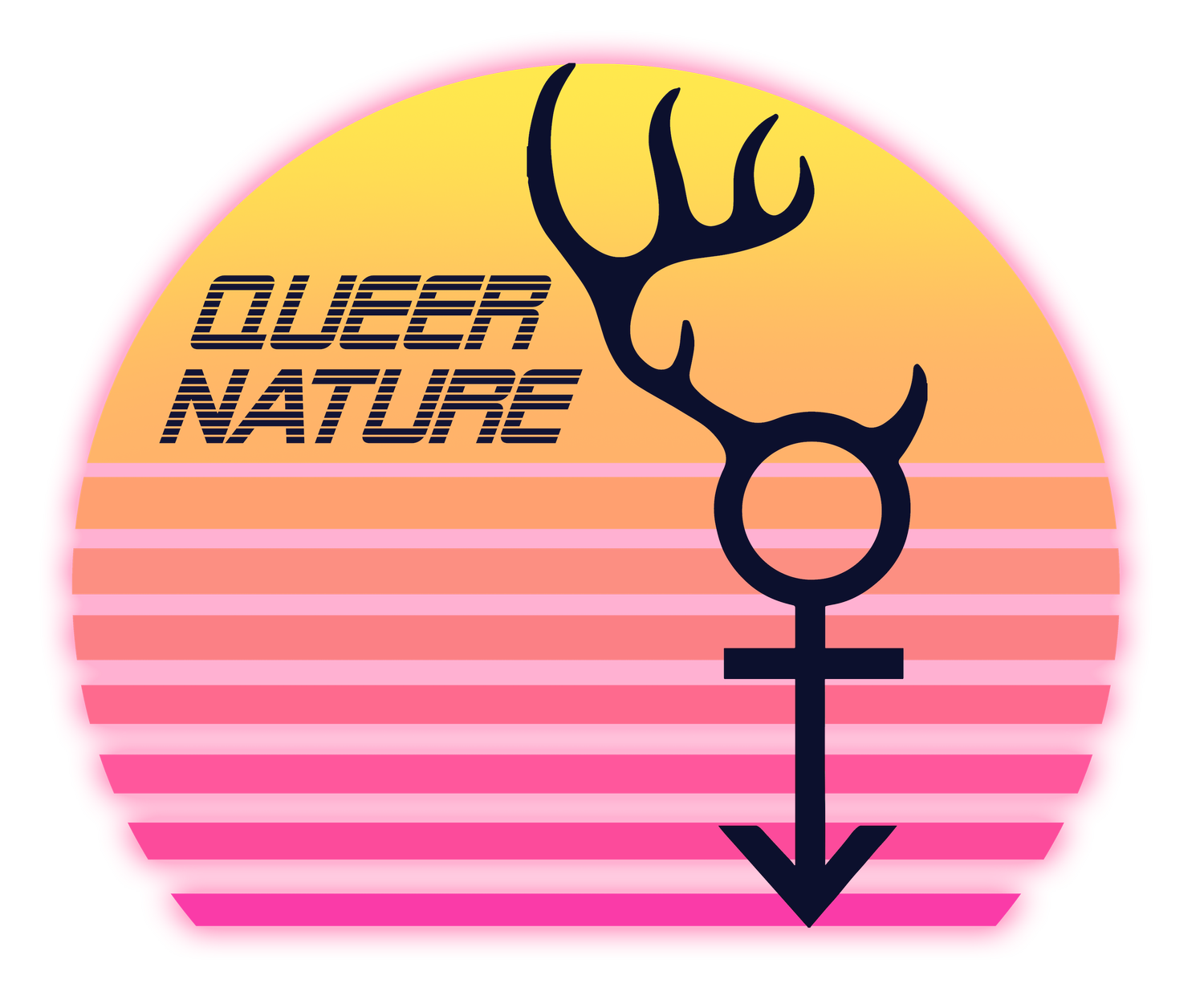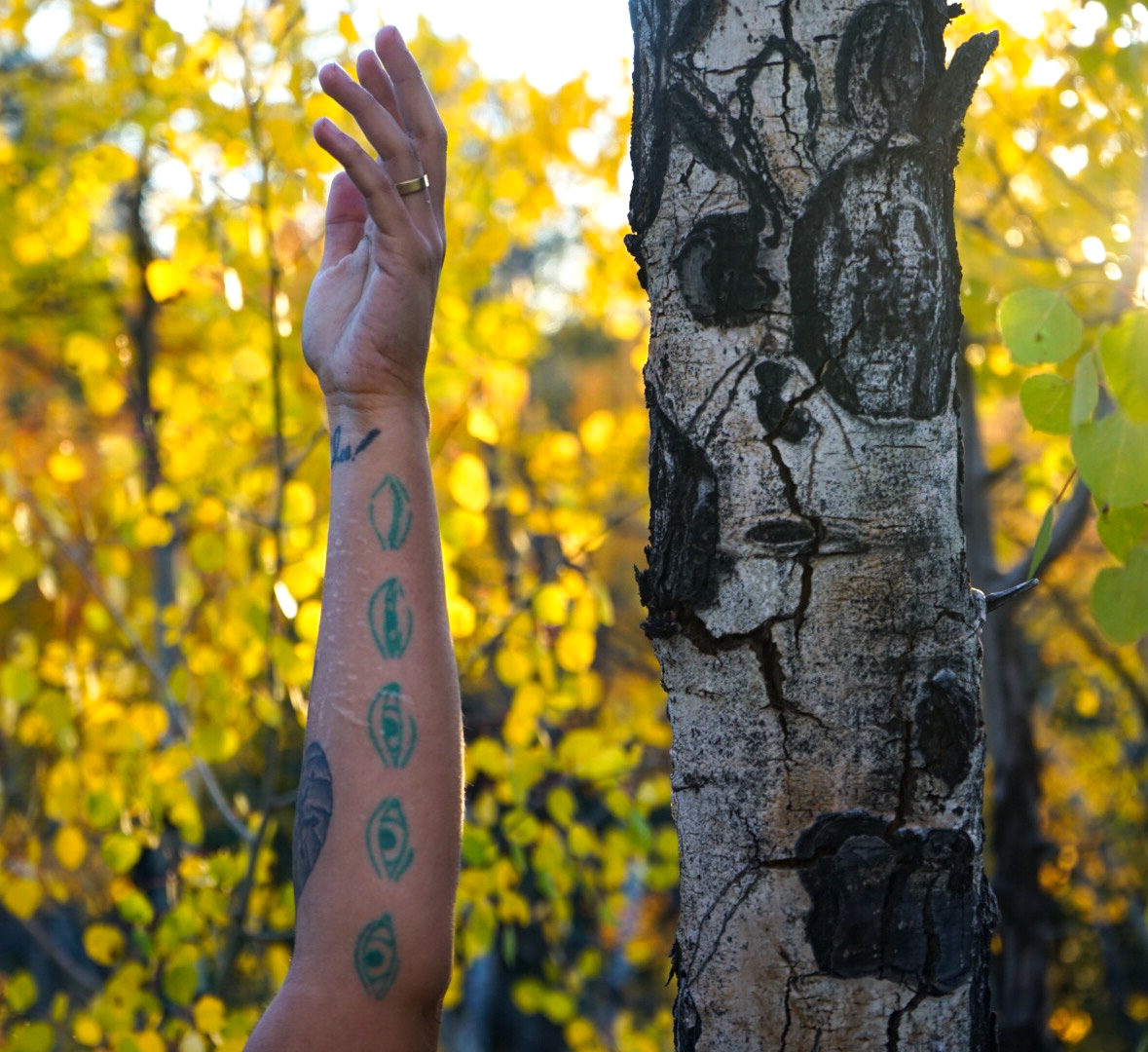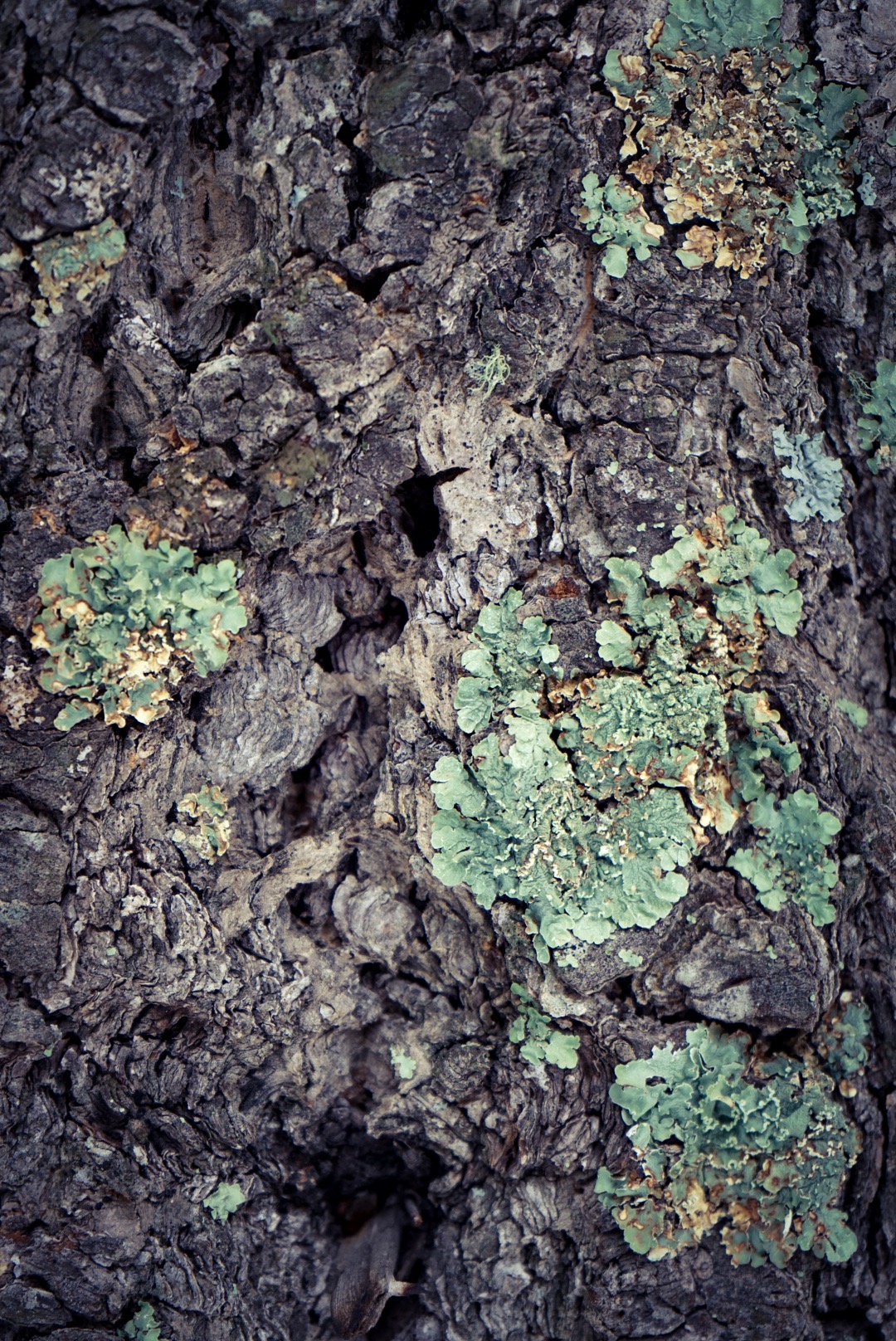My homeland is liminality.
Etched across my body in scars is a map Home.
Motherland from the Andes and China; fatherland from the Altai mountains.
Hybridity is a maddening gift of confluence,
Landscapes simultaneously longing and being longed for across continents.
In my work with queer rites of passage and queer ecopsychology, what I have come to know is that queerness is an ecological formation. From my matrilineage, I come from a lineage of culturally-rooted gender-variance known as Quariwarmi. The Incas summoned a queer mountain deity of the jaguars, the chuqui chinchay, during a pachacuti—a cataclysmic change (Horswell, 2005). This deity is the patron of dual-gendered indigenous peoples. In Incan cosmology, the creative force of the Universe is androgynous; Quariwarmis, the embodiment of this liminal space. In essence, a cultural death doula was summoned during times of great unknown. When the conquistadors invaded, the Quariwarmis were one of the first to be targeted and killed by the Spaniards. Many Quariwarmis had to go into hiding to survive Pizarro’s brutality.
In many indigenous cultures, there are gender-liminal community members who hold a similar role of midwife/doula/medicine person/undertaker/initiator/underworld guide (Jkharij, 2016). How do we honor the emergent gifts that the queer and gender-creative youth of our time are bringing in the midst of our own pachacuti—or what ecophilosopher Joanna Macy refers to as the Great Turning (1998)? What are the consequences—to the human and more-than-human community—of not honoring this emergence?
Since 2013, the School of Lost Borders has offered a Queer Quest for adults through the co-vision of Ruth McMillan and Pedro McMillan. My spouse, So Sinopoulos-Lloyd, and I participated in the Queer Quest in 2015 which stoked our passion to bring queer rites of passage into the world. Through another co-vision of Ruth and Pedro, they invited So and myself to co-guide the school’s very first Queer Youth Quest (QYQ) alongside Pedro as queer elder. This past Summer Solstice the QYQ was held on Mountain Ute hunting territory. It began directly after summer Queer Quest and four queer adult fasters welcomed in the youth.
The six youth who came with their longings, their struggles, their resilience, and brilliance made me realize the depth of the consequences of not honoring their gifts. According to a study at UCLA, lead author Bianca D.M. Wilson, the Rabbi Barbara Zacky Senior Scholar of Public Policy at the Williams Institute states, “more than one in four California youth express their gender in ways that go against the dominant stereotypes” (as cited in Dowd, 2017). Queerness is not a new phenomenon; that narrative is a product of colonization and is erasure in action. Queerness is as old and complex as lichen; it informs our soul’s work. It is an aspect of the soul likened to the anima and animus; it is the animx. When speaking of energetic forces and only acknowledging feminine and masculine, the liminal walkers continue to be erased. We are liminal—not invisible. In contrast to the chronically binary language used in the dominant western culture—and in rites-of-passage work—we could acknowledge the feminine, masculine, and the liminal.
The medicine from the queer youth at QYQ was palpable. The youth bonded instantly and slept every night—excluding the wilderness solo—under the stars together like a pack of coyotes. While apart on their solos, their howls echoed across the land at sunset in resilient solidarity. In their stories we witnessed healing of the ancestral trauma of assimilation by reinscribing brown skin as intimacy with the sun; the necessary boundary-setting with a direct lineage of white supremacists; rewriting stories as liberation fighters, and the reclamation and (re)sorcery of queer witchy magic.
This queer storying of the land is a salve to the cultural wounds of settler colonialism. These wounds manifest in the narrative of not belonging, being unnatural, or being targeted for embodiments outside of cisheteropatriarchy and whiteness including transness, blackness, indigeneity, nonbinary, queerness, neurodivergence, and the diversity of intersections in between. This systemic cultural exiling often involves incarceration and/or pathologization and psychiatric abuse[1] by the colonial psychopharmaceutical industry. This is particularly true for those who experience parallel realities and altered states whereas, in their indigenous cultures of origin, this consciousness may be a sign of ripeness or a necessary gift to the community during a pachacuti.
Genderqueer young-ancestor, Seb Barnett (2016), elaborated on their experience of cultural exile and neurodivergence,[2] “[t]here are some people who are so magical that we break reality. Rules don’t apply to us the same way, and the laws of the universe warp like mirages in the heat of the intensity of us. … [We] are alien in a world that won’t believe in us. We are mythic.” Seb passed into the other realm by choice in late 2016, becoming a young ancestor at the age of 35, shortly after this quote was obtained. For many, the pervasive “othering”, dismissing, and demonizing of their queerness is “crazy-making”, resulting in pathologizing, psychiatric labels, and subsequent extreme efforts to avoid the mental health system. Survival can feel impossible; at this point, internalized oppression becomes deadly, robbing our communities of queer medicine and necessary biodiversity. Many queer people are psychiatric survivors unraveling the grip of that trauma and remything themselves on the earth.
Queer medicine is an ecological force of nature. It is clear that the QYQ youth were worked on by the land. As their bodies imprinted the ground each night and dreamt a queering dream as a collective, the land was nourished in return. Ancestors were healed by the deep listening and remediation of their somatically-petrified grief and rage; future ones resourced by an additive mythos of their resilient lineage in their effort for ecological liberation. The youth who returned from their 72-hour wilderness solos were a living emergence of queer futurism—bridging queer lineages across dimensions of time.
Queer black abolitionist, Adrienne Maree Brown (2017, p. 16) states, “I would call our work to change the world ‘science fictional behavior’—being concerned with the way our actions and beliefs now, today, will shape the future, tomorrow, and the next generations.” The QYQ had an ancient taste yet was science fictional behavior, weaving different lineages of QTBIPOC[3] youth and white youth on First Nations territories. What I witness with queer, transgender, gender-liminal and two-spirit people in ceremony is just this: an undefinable brilliance of emergence that is science fictional by nature, because of what we are dreaming into and what the earth is queerly dreaming into us.
The Dream of Queerness takes many shapes. One formation is Cryptobiotic Soil, a complex community of beings creating an underground network of stabilization that allows seeds to catch and germinate in harsh environments. The diversity of organisms is what creates the resiliency that is of service to the ecological whole. Magic occurs in the space in-between, such as in the symbolism of a mandorla, the almond-shaped sacred space of two overlapping circles that is often portrayed as a portal. Beneath the soil, above and within soil porosity; lichen, fungi, cyanobacteria, bryophytes, and algae are all interdependent and in an adaptive collaboration of emergence and resilience. There is a diversity of intersections within queer landscapes. The living community that comprises Cryptobiotic Soil is a mirroring of how co-resilience is formed in our collective survival and thrival stories as a two-spirit, nonbinary, trans and queer community within white cisheteropatriarchy. We have always held roles as cultural creators or as with the Quariwarmi, holders and ceremonialists of the cultural story. The in-between mycelial network is what creates a cultural seed catchment system for germination of the impossible and the mythic.
To honor queerness, one must honor where queerness comes from—the earth. It is a decolonizing process by nature. We must inquire who the First Nation peoples are on the land we offer rites of passage on.[4] What is their lineage of culturally-rooted queerness? How has it been impacted by colonialism?[5] Is there a connection to the losses of culturally-rooted queerness and how their rites of passage have been impacted? What are their current struggles now? If you are a settler, how do you give back in reciprocity and relation? What are your own queer lineages whether you are heterosexual and/or cisgender or not? Whether we acknowledge it or not, we all have queer ancestors that have shaped our cultural mythos and stories of origin. Queer lineage has persevered and will continue to emerge from the earth in formation. This ecological expression needs to be honored and protected.
Rites of passage are a call for accountability–to one’s human community, more-than-human community, ancestors, future ones and irrefutably to one’s soul. To prepare for a good death to become an honorable ancestor, we listen to the more-than-human world during our vision fasts for a way we can be accountable across time and species. In rites of passage, liminality is central to the process: the three stages being pre-liminal (severance), liminal (threshold) and post-liminal (incorporation). How are rites of passage practitioners responding to this call in an age when our liminal walkers are taking their lives at alarming rates (James et al., 2016)? Our species stands at the threshold of the global rite of passage of climate change in the Anthropocene. How do we uplift those who inhabit the liminal?
Emergence is a practice of living into liminality—a confluence of becoming. Some of our greatest guides for this are the queer youth who occupy the liminal and envision a future we cannot see. This emergence is a listening across borders and binaries. It is where the scars of the queer youth point to: a return Home.
References:
Barnett, S. (2016, September 30). There are some people who are so magical that we break
reality. Retrieved from
https://www.facebook.com/seb.barnett.5/posts/10157632239030604
Brown, A. M. (2017). Emergent strategy: shaping change, changing worlds. Chico, CA: AK
Press.
Dowd, R. (2017, December 13). 27% of California adolescents say they are viewed as gender
nonconforming, study finds. Retrieved from
http://newsroom.ucla.edu/releases/27-of-california-adolescents-are-gender-nonconformin
Horswell, M. J. (2005) Decolonizing the sodomite queer tropes of sexuality in colonial Andean
culture. Austin: University of Texas Press.
James, S. E., Herman, J. L., Rankin, S., Keisling, M., Mottet, L., & Anafi, M. (2016). The Report
of the 2015 U.S. Transgender Survey. Washington, DC: National Center for Transgender Equality.
Jkharij (2016). my gender is My Gender. Charleston: CreateSpace.
Macy, J., & Brown, M. Y. (1998). Coming back to life: practices to reconnect our lives, our
world. Gabriola Island, B.C.: New Society Publ.
Reference Notes
1.↵A term developed by the psychiatric survivor movement in reference to traumatic experiences from interventions by psychiatry. Check out The Icarus Project and MindFreedom International for more information on radical mental health advocacy as well as the podcast, Madness Radio.
2.↵Having a brain that functions in ways that diverge significantly from the dominant societal standards of “normal” or neurotypical. This includes genetic/innate and/or from a brain-altering experience such as trauma
3.↵QTBIPOC: Queer & Trans Black Indigenous People of Color
4.↵A great resource for researching whose land you occupy in Turtle Island: https://native-land.ca/
5.↵A comic book covering trans & nonbinary identity, colonialism, and the prison industrial complex: my gender is My Gender by jkharij
Note: This essay was originally published in Youth Passageways' Confluence Journal Volume 2 Issue 2.



